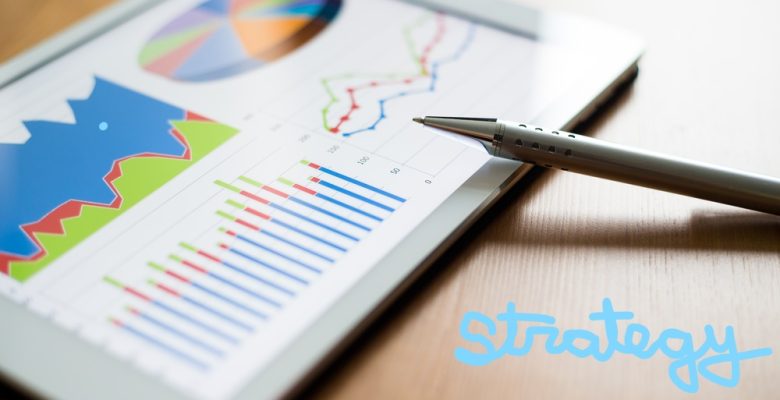
Information is the oil of the 21st century, and analytics is the combustion engine.
Peter Sondergaard, Senior Vice President, Gartner Research
There was a time when the data from doing business—the numbers, the info, the facts—simply happened. It all existed because someone was engaged in business. It accumulated just because . . .
Well, according to Norm Lillis, “Those days are gone, of course. The business and tech leaders I meet now understand that data isn’t just a product of the business; in many ways, it is the business. Aside from its people, an organization’s data is its most important asset.“
So, data is here to stay. And that’s a good thing, right? Yes, providing folks know what to do with it.
“Data matters to any company, regardless of size, sector, or type. In fact, data is one of your biggest business assets, alongside your products, services, intellectual property, and people. But to get the most out of data, it’s vital you have a data strategy in place,” says Bernard Marr.
If you’re struggling to keep up with the vast amount of data that today’s fast-paced technology can, almost, effortlessly produce, you’re not alone. Businesses everywhere face the challenge of utilizing the mountain of information that, if harnessed and understood, can yield big dividends.
We know what doesn’t work when facing this challenge.
- The pretend-it-doesn’t exist approach, quite like the ostrich’s infamous head-in-the-sand methodology.
- Staring with a fixed, deer-in-the-headlights gaze at the accumulated stats and information.
- Diving headlong into the latest techy gadgets without a thorough study as to the suitability of said tools to your business plan, yield good results.
Data Strategy
The key to utilizing the wonderful world of data to grow your business is a data strategy.
“The truth is that most companies, especially smaller ones, don’t know what a data strategy is,” continues Lillis. “While they recognize the value of data, few have modernized their approaches to managing it. They’re not properly analyzing it, and they’re not sharing it throughout the organization.”
So, what does a data strategy look like?
“The idea behind developing a data strategy is to make sure all data resources are positioned in such a way that they can be used, shared, and moved easily and efficiently,” shares Dwayne Gefferie. “By establishing common methods, practices, and processes to manage, manipulate and share data across the company in a repeatable manner, a data strategy ensures that the goals and objectives to use data effectively and efficiently.”
What does a data strategy involve?
Lillis reminds us, “Data strategies should involve more than storage. The point is that storage and security are just one part of a larger data strategy.”
Marr instructs, “A good data strategy shouldn’t be created in isolation; your overall business strategy must drive it. Therefore, the first step in any data strategy is to consider your organization’s strategic priorities and key business questions. Only then can you identify how you might use data to help you deliver those priorities and answer your business questions.“
And the MIT CISR Data Board suggests, in general, a data strategy answer these five questions.
What is the organization’s vision for data?
A data strategy lays out how data will enable specific business goals.
How will the organization move forward on its data journey?
A data strategy clarifies how the organization will execute the desired data activities.
How will the organization drive adoption and use?
A data strategy describes how the organization needs to change to maximize value from the desired data activities. It should include change management components (e.g., education, incentives, measurement, communication plans) that will inspire change at the individual, group, and organizational levels.
When will the organization execute the proposed activities?
A data strategy lists the sequence of steps that the organization will follow to move forward; it contains a roadmap with milestones and priorities.
What is the organization’s economic logic?
A data strategy explicitly describes how the company will monetize its data using some combination of improving, wrapping, and selling activities.
“Become data-driven or perish,” declares Gefferie. “I strongly believe that companies who don’t believe that their Data is an Asset and it should be managed accordingly, are going to be in a lot of trouble in the next five years.”
He suggests tasking one person as fully responsible, company-wide, for data. “This means working together with every single department to design a common way to acquire, store, manage, share and use data, but more importantly to ensure that the culture adopts a data-driven way of thinking and decision making, through facilitating conversation and sharing decisions and successes.“
Someone with a vision toward the bigger picture must hold this critical position; someone whose people and communication skills are well-developed, in addition to being a “data person.”
And that’s where RomAnalytics can help. You can trust us to find the best and brightest in the booming insights and analytics space. Our services are structured to scale with your business, regardless of your staffing needs, we can enhance your workforce as needed with permanent, contract, and freelance professionals. We consistently outperform generalized staffing and recruiting firms, in both time and accuracy. You owe it to yourself and your organization to contact our team for a consultation about our solutions to your staffing needs.
